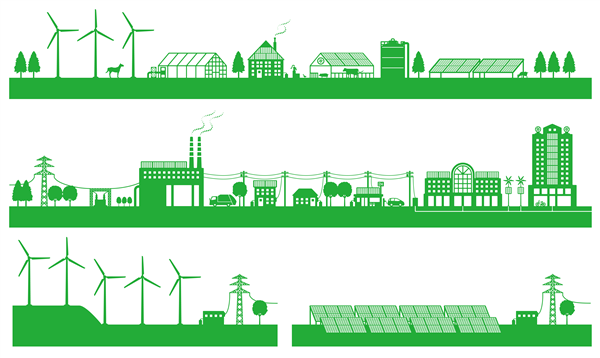For my earlier blog on how innovations at TI are driving the growth of renewable energy see here.
TI’s offerings are aiding the development of some key technological drivers of renewable energy. Distributed energy systems, substation automation and grid storage technologies have been some of the key drivers that are accelerating the adoption of alternative energy into main stream.
Distributed Energy Resources (DER) Systems – Decentralized, modular energy resources located in proximity of the load they serve and typically use renewable energy resources. The DERs have started to gain popularity because they eliminate costs, inefficiencies and interdependencies associated with the traditional centralized energy systems.
Prior to DERs, one of the key hurdles for utility scale expansion of solar, wind and hydro energy was the intermittency associated with these sources. With DERs such as micro-grid, fluctuations due to intermittency (from these renewable energy sources) and its impact to the main grid are being mitigated. With large scale adaptation of such micro-girds, renewable energy sources are starting to actively participate as part of the smarter hybrid grid.
Substation automation – Allows for using data from Intelligent Electronic Devices (IED) to supervise, control and automate operations in a substation. This has resulted in increased reliability of both the DERs as well as conventional grid over a wide range of operating conditions. Further, this has enabled easy integration of multiple micro-grids to the conventional grid, there by forming the hybrid grid that provides the flexibility to manage efficiency during peak load periods.
Supervision of power delivery systems in substations reduce the occurrence of outages and can allow for quick reallocations of energy resources via remote control mechanisms. Substation automation and integration is fueling the growth of renewable energy generation and making its integration into the grid more manageable.
Grid storage technologies – With recent advancements such as improved battery chemistry and efficiency, automation to remotely monitor and control battery installations has forced utilities to rethink on how the demand management must be optimized. These advancements have eliminated the impact for solar and wind energy intermittency and has led to further accelerate growth in renewable energy markets.
With an upward momentum in integration of renewable energy sources from DERs to the hybrid grid, the new storage technologies now have an important role to play in the day-to-day energy requirements of a smart home. As storage technologies continue to mature, we will see zero-emission grid storage technologies replace noisy, dirty fossil-fuel generators that currently act as back-up systems for a vast majority of homes, business establishments as well as utility providers.
At TI, we foresee a huge growth in the renewable energy market, aided by continued technological advances and innovation. Stay tuned to the “On the Grid” blog for further detailed discussions on each of these technology drivers and much more…
Additional resources:

